Forums
- Forums
- Duggy's Reference Hangar
- RAF Library
- Westland Wyvern
Westland Wyvern
Post a reply
- Go to Previous topic
- Go to Next topic
- Go to Welcome
- Go to Introduce Yourself
- Go to General Discussion
- Go to Screenshots, Images and Videos
- Go to Off topic
- Go to Works in Progress
- Go to Skinning Tips / Tutorials
- Go to Skin Requests
- Go to IJAAF Library
- Go to Luftwaffe Library
- Go to RAF Library
- Go to USAAF / USN Library
- Go to Misc Library
- Go to The Ops Room
- Go to Made in Germany
- Go to Campaigns and Missions
- Go to Works in Progress
- Go to Juri's Air-Raid Shelter
- Go to Campaigns and Missions
- Go to Works in Progress
- Go to Skinpacks
- Go to External Projects Discussion
- Go to Books & Resources
-
10 years agoWed Sep 24 2025, 06:50pmDuggy
 Main AdminIn 1944, Teddy Petter came up with concepts for a fighter to be based on the new Rolls-Royce "Eagle" 24-cylinder "H" configuration piston engine, one with the engine conventionally placed in the nose, and one with it placed in mid-fuselage -- driving a nose prop via a driveshaft as along the lines of the American Bell P-39 Airacobra. The concepts also included a variant powered by a turboprop engine, then referred to as a "propeller turbine". The designs included both RAF and naval configurations. The Air Ministry gave the go-ahead for more advanced investigation of the "P.10" or "W.34", as it was designated.
Main AdminIn 1944, Teddy Petter came up with concepts for a fighter to be based on the new Rolls-Royce "Eagle" 24-cylinder "H" configuration piston engine, one with the engine conventionally placed in the nose, and one with it placed in mid-fuselage -- driving a nose prop via a driveshaft as along the lines of the American Bell P-39 Airacobra. The concepts also included a variant powered by a turboprop engine, then referred to as a "propeller turbine". The designs included both RAF and naval configurations. The Air Ministry gave the go-ahead for more advanced investigation of the "P.10" or "W.34", as it was designated.
The RAF never became keen on the W.34, but the Admiralty was interested enough to award a contract for six prototypes under specification N.11/44. The machine was envisioned as "torpedo fighter", capable of air combat or strikes with torpedoes and other offensive stores. These prototypes were to be powered by the Eagle engine. Westland also came up with a similar design powered by the Rolls-Royce RB.39 Clyde turboprop; following issue of the appropriate specification, N.12/45, three prototypes of the "W.35" were ordered in early 1946, with one to be powered by the Clyde and the other two to be powered by the Armstrong-Siddeley Python turboprop. Since neither engine was in production, it was seen as wise to evaluate alternatives. There were also some studies of a turbojet variant, the "W.36", to be powered by a Rolls-Royce AJ.65 (later Avon) engine, but it never got out of the paper stage. By that time, Petter had left Westland for English Electric, with the design effort at Westland taken over by John Digby.
Analysis showed that the Eagle would be substantially heavier than the Clyde, with an Eagle-powered aircraft being correspondingly heavier as well, resulting in poor performance. That meant turboprop propulsion was the way of the future, but work on the Eagle-powered W.34 wasn't abandoned immediately. Initial flight of the first W.34 prototype -- now the "Wyvern Mark I", a wyvern being a Nordic flying dragon, was on 16 December 1946, with Harald Penrose at the controls.
This machine and the second prototype were unarmed landplane variants, with fixed wings and no arresting gear; the Eagle 22 engine provided an impressive 2,610 kW (3,500 HP) and drove a Rotol contraprop system with dual four-blade props, the contraprop arrangement being intended to cancel torque. The first prototype aircraft was lost on 15 October 1947 when the propeller bearings failed in flight. Westland's assistant test pilot Sqn. Ldr. Peter Garner was killed attempting to make an emergency landing.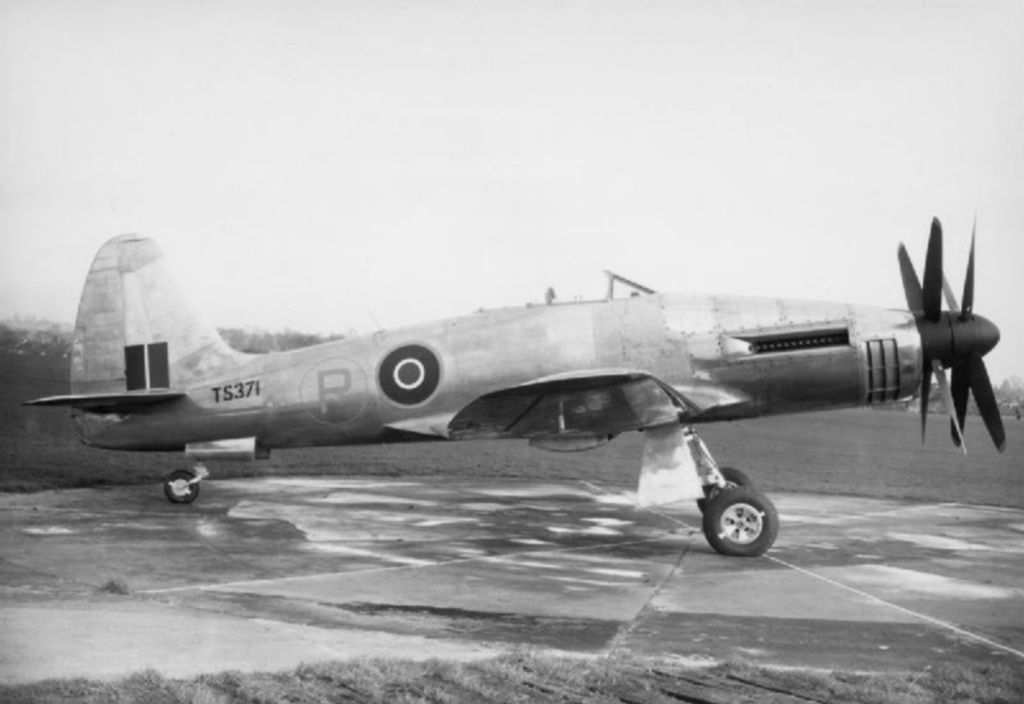
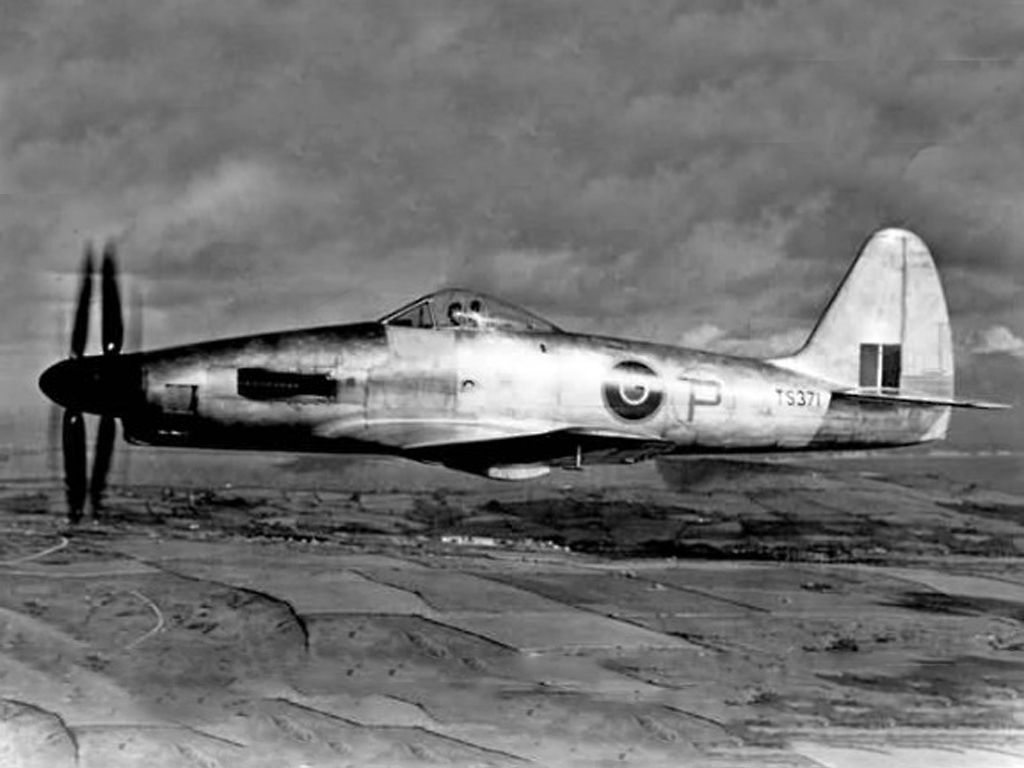
The second prototype was then modified with a tailplane featuring dihedral, instead of being flat as originally fitted, with dive brakes fitted above the wings.
The remaining four prototypes were fully navalized, with folding wings and arresting hook, as well as armed with four Hispano Mark V cannon in the wings. One was initially fitted with a six-blade de Havilland contraprop instead of the eight-blade Rotol contraprop, though it was later updated to the Rotol contraprop. There was some interest early on in going on to production, with 20 "Wyvern Torpedo Fighter Mark I (TF.1)" machines ordered in August 1946, but in reality only 7 were actually built. They never saw operational service, though they were used for trials. The Eagle engine was then abandoned after only a few dozen had been built.
* The first turboprop-powered W.35 prototype, designated "Wyvern TF.2", performed its initial flight on 18 January 1949, again with Penrose at the controls; it was a short hop, the cockpit filling up with smoke, due to fuel leaking onto the engine exhaust pipe. This machine was powered by the Clyde engine, driving a 6-blade Rotol contraprop. It was followed before the end of the year by the two Python-powered machines, which were longer and heftier than the Clyde machine since the Python was bigger. Trials dictated fit of a taller tailfin, as well as the tailplane with dihedral. One of the two Python machines was lost in a landing accident in October 1949 -- which killed pilot Mike Graves, along with three people in a house beyond the end of the runway at Yeovil.
The Python-powered variant was seen as promising enough to lead to a contract for 20 preproduction TF.2 machines, the first flying on 16 February 1950, though only 13 would be built in all. The preproduction machines were similar to the original TF.2 prototypes, but with changes incorporated in the prototypes during evaluation and some new fixes, most prominently a Python 2 engine that addressed the slow throttle response of the Python 1 of the prototypes -- by the simple measure of running the Python 2 at constant RPM and using prop pitch to control power. The Python 2 would have problems of its own, however, occasionally suffering from violent and damaging engine surges. The TF.2 also featured a Martin-Baker Mark 1B ejection seat, replacing the ML-built ejection seat of the prototypes.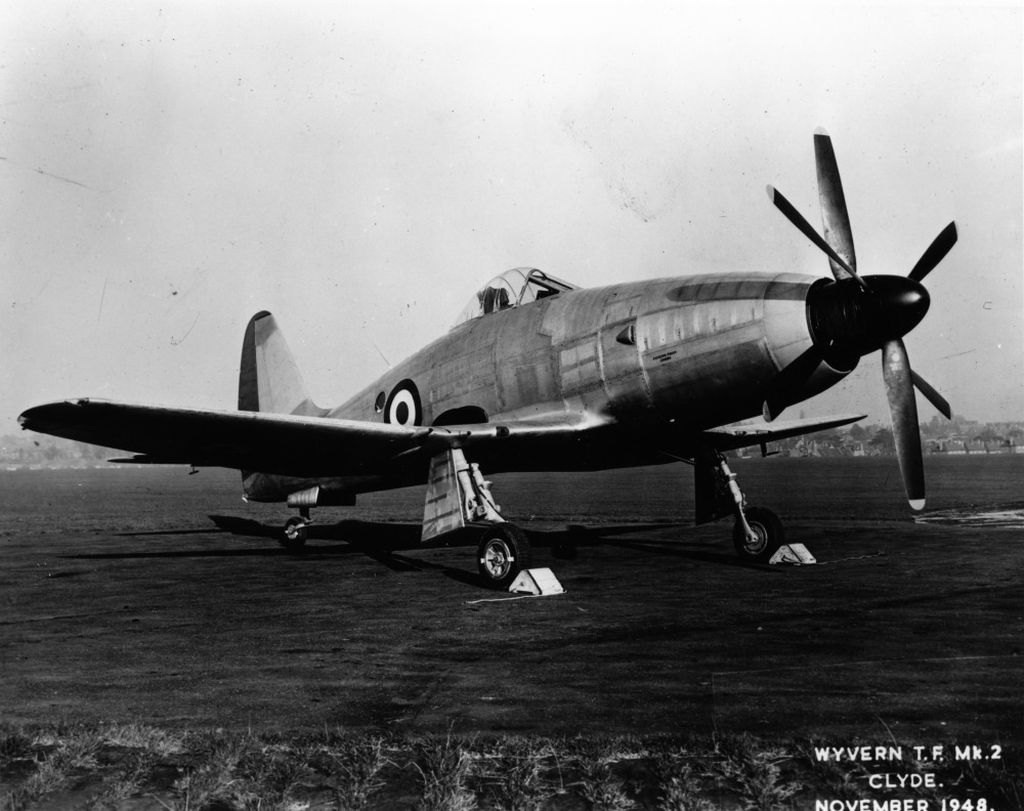
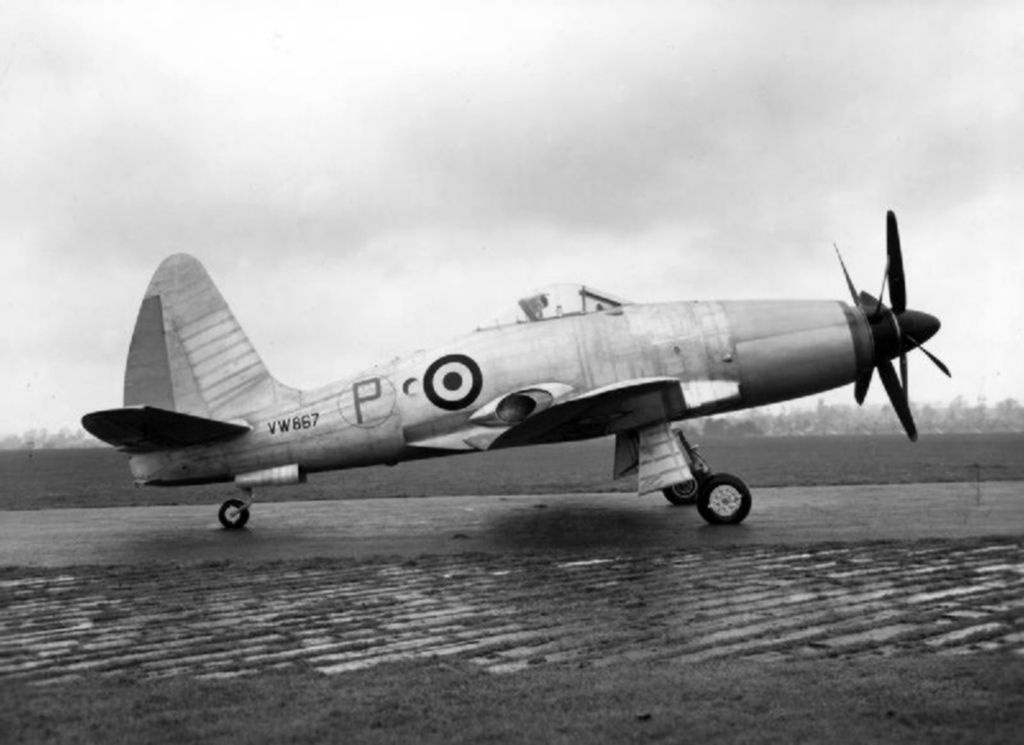
There was work in parallel to put together a two-seat conversion trainer variant, the "W.38" or "Wyvern Trainer Mark 3 (T.3)", as covered by specification T.12/48. It was effectively a TF.2 with a modified fuselage for tandem cockpits, each cockpit having its own sliding canopy and each with an ejection seat; the instructor in the rear seat had a periscope to improve forward view. The T.3 prototype performed its initial flight on 11 February 1950, but official interest had faded and it didn't lead to production. The T.3 was written off in the fall of 1950 after a forced landing in a marsh.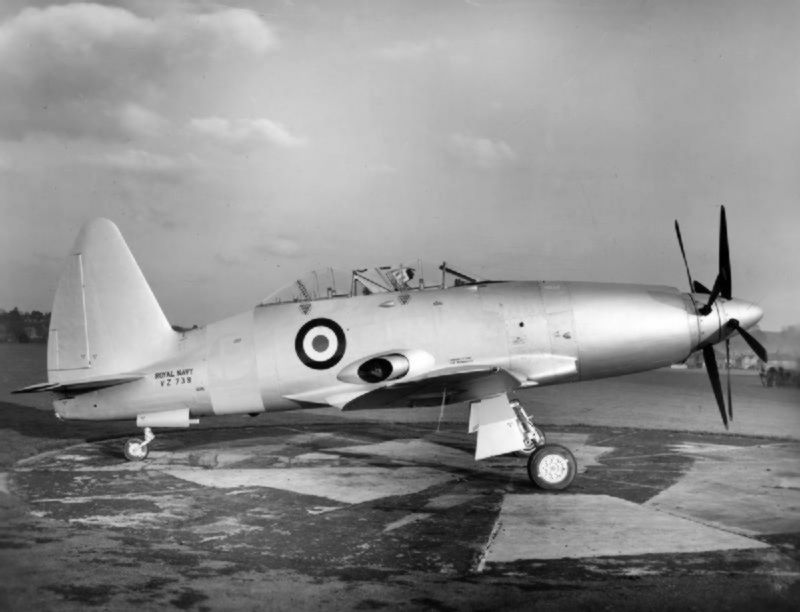
However, an initial production order for the "Wyvern Strike Mark 4 (S.4)" was placed in 1951, the change in designation to "Strike" demonstrating that all pretensions of the Wyvern as an air combat fighter had been abandoned. A total of 98 was built, including 7 TF.2 preproduction machines completed to S.4 spec -- which is why the TF.2 preproduction build only ran to 13 aircraft -- and four TF.2 preproduction machines updated to S.4 spec.
There was some thought of building a follow-on "Wyvern S.5E" with a Napier E.141 Double Eland "twin-pac" turboprop engine and wingtip fuel tanks, but it didn't happen, and the S.4 was the end of the line. The S.4 entered service in 1953, though it didn't perform its first operational carrier cruise until 1954. In parallel, a number of the various Wyvern prototypes soldiered on in trials well into the 1950s.
The Wyvern S.4 was of all-metal construction, made mostly of aircraft aluminum, with a low straight wing and generally conventional tail arrangement, plus fully retractable landing gear. The pilot sat on a Martin-Baker Mark 1B ejection seat -- later updated to the Mark 2B -- under a bubble-type canopy, with the "humpbacked" configuration of the aircraft giving a good forward and all-round view, with the canopy sliding back to open. Later production featured a canopy with an armor glass windscreen and a metal instead of plexiglas aft section.
The wings were of inverted gull configuration, with a 1 degree anhedral droop inboard and 6 degree dihedral outboard, with the outboard wings folding up hydraulically; naval prototypes and early production also had wingtips that folded up to provide clearance in the carrier hangar deck. The flight control arrangement was generally conventional, including flaps, ailerons, elevators, and rudder -- though there were split flaps on the outer wings that could also serve as dive brakes. As mentioned, while the tailplane had been flat on early prototypes, it had a noticeable dihedral on late prototypes and the production S.4 machines; the S.4 also had little rectangular "finlets" towards the tailplane tips, these finlets initially being absent on the TF.2 machines built or updated to S.4 spec. All gear assemblies had single wheels, the main gear hinging from the wings in toward the fuselage; the main gear struts telescoped inward on retraction to allow the gear to fit in the wing. There was a stinger-type arresting hook in the tail.
Early production of the Wyvern S.4 was originally powered by an Armstrong-Siddeley Python 2 turboprop, though as mentioned the Python 2 had some nasty habits; it was quickly updated to the Python 3, featuring a Rotol-built engine control unit that tamed the beast. The Python drove an eight-bladed Rotol contraprop and featured split exhausts below the cockpit, just above the rear edge of the wings; the engine provided 2,740 kW (3,670 SHP) of power, with the exhaust also providing 5.12 kN (520 kgp / 1,150 lbf) thrust. There were two fuel tanks in the fuselage, plus a fuel tank in each inner and outer wing -- for a total of six tanks, with an overall capacity of 2,323 liters (613 US gallons).
Internal armament consisted of four Hispano Mark V cannon, one inboard and one outboard of each wing fold, with 200 rounds per gun. There were seven stores attachments: one on the centerline, one under each inner wing, and two rocket launch rails under each outer wing. The centerline pylon could carry a 51 centimeter (20 inch) torpedo, a 450 kilogram (1,000 pound) bomb, or a 682 liter (180 US gallon) external tank. The inboard pylon could handle a 450 kilogram bomb or 455 liter (120 US gallon) external tank, while the two rocket rails could handle up to a total of four "60-pounder" (27.2 kilogram) rockets, stacked two to a rail. The inboard pylon could be swapped for two rocket rails as well, giving the Wyvern a total rocket warload of 16 rockets.
* The Wyvern was regarded as pleasant to fly, but the turboprop powerplant wasn't completely satisfactory -- except at low altitude, the S.4 was slower than the Eagle-powered TF.1, and the S.4 also had an inferior rate of climb. It equipped a total of four service squadrons, though the maximum number of squadrons operating it at any one time was three and it was more generally only two.
The Wyvern's service life was short, its only real distinction being combat service in the 1956 Anglo-French-Israeli seizure of the Suez Canal under Operation MUSKETEER, with carrier-based Wyverns contributing with airstrikes using 450 kilogram (1,000 pound) bombs and battlefield close support with rockets and cannon fire. Although MUSKETEER was tactically successful, with the occupation force quickly brushing aside Egyptian resistance, the exercise was a political fiasco, with the Americans bluntly ordering the British to get out. The British did and the French were forced to follow.
The Wyvern began to be drawn down in 1957 and was out of service by 1958. Given its limited service career, it is hard to know what to make of it. A simple assessment is that it was too little and too late, obsolescent when it was introduced and quickly left behind by technological advance. All the Wyverns were scrapped, except for one, ironically an Eagle-powered TF.1 prototype, which now resides at the Royal Navy Fleet Air Arm Museum in Yeovilton.
General characteristics
Crew: 1 (2 in T Mk.3)
Length: 42 ft 3 in (12.88 m)
Wingspan: 44 ft 0 in (13.41 m) (folded 20 ft (6 m)
Height: 15 ft 9 in (4.80 m) (folded 20 ft (6 m)
Wing area: 355 sq ft (33.0 m2)
Empty weight: 15,600 lb (7,076 kg)
Gross weight: 21,200 lb (9,616 kg)
Max takeoff weight: 24,550 lb (11,136 kg)
Powerplant: 1 ? Armstrong Siddeley Python turboprop engine, 3,560 hp (2,650 kW) +1,100 lbf (4.893 kN) residual thrust
Propellers: 4-bladed Rotol contra-rotating, 13 ft (4.0 m) diameter
Performance
Maximum speed: 383 mph (616 km/h; 333 kn) at sea level, 380 mph (612 km/h) at 10,000 ft (3,048 m)
Range: 910 mi (791 nmi; 1,465 km)
Service ceiling: 28,000 ft (8,534 m)
Rate of climb: 2,350 ft/min (11.9 m/s)
Wing loading: 59.7 lb/sq ft (291 kg/m2)
Power/mass: 0.194 eshp/lb
Armament
Guns: 4 ? 20mm British Hispano Mk.V cannon, 2 in each wing
Rockets: 16 ? RP-3 underwing rockets
Missiles: 1 ? Mk.15 or Mk.17 torpedo
Bombs: Up to 3,000 lb (1,361 kg) of bombs or mines
Below cockpit.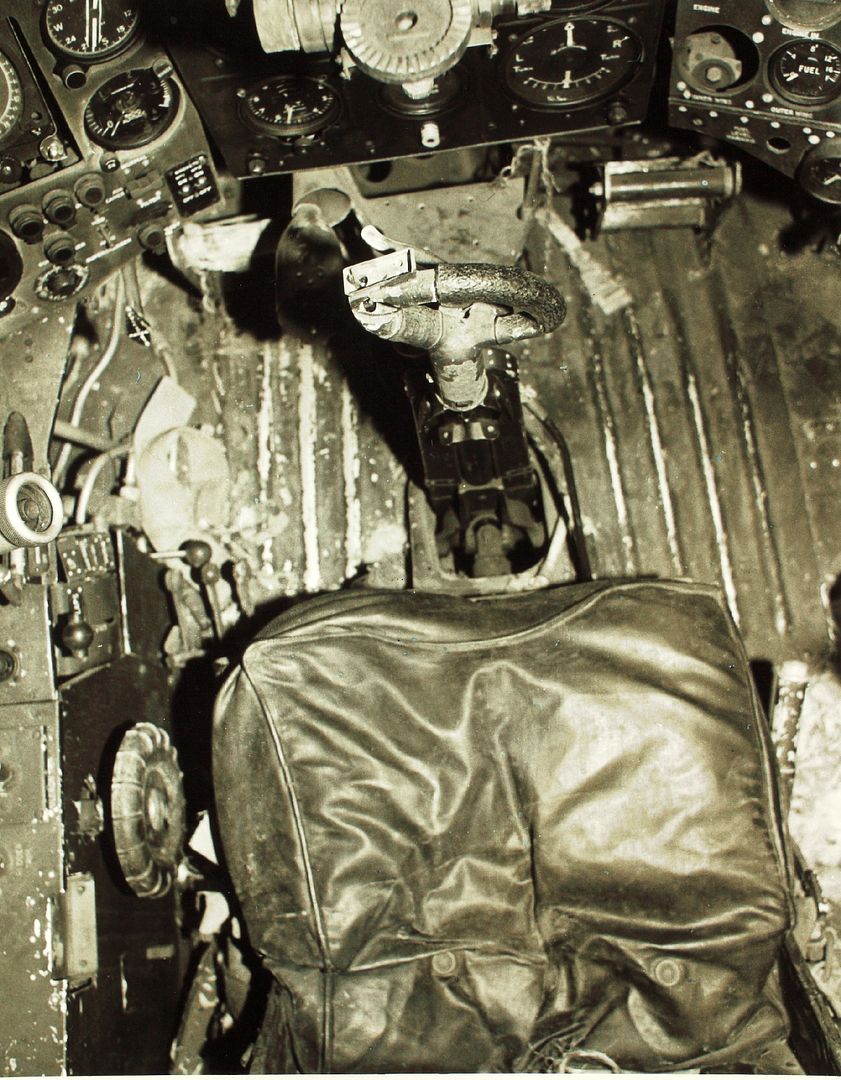
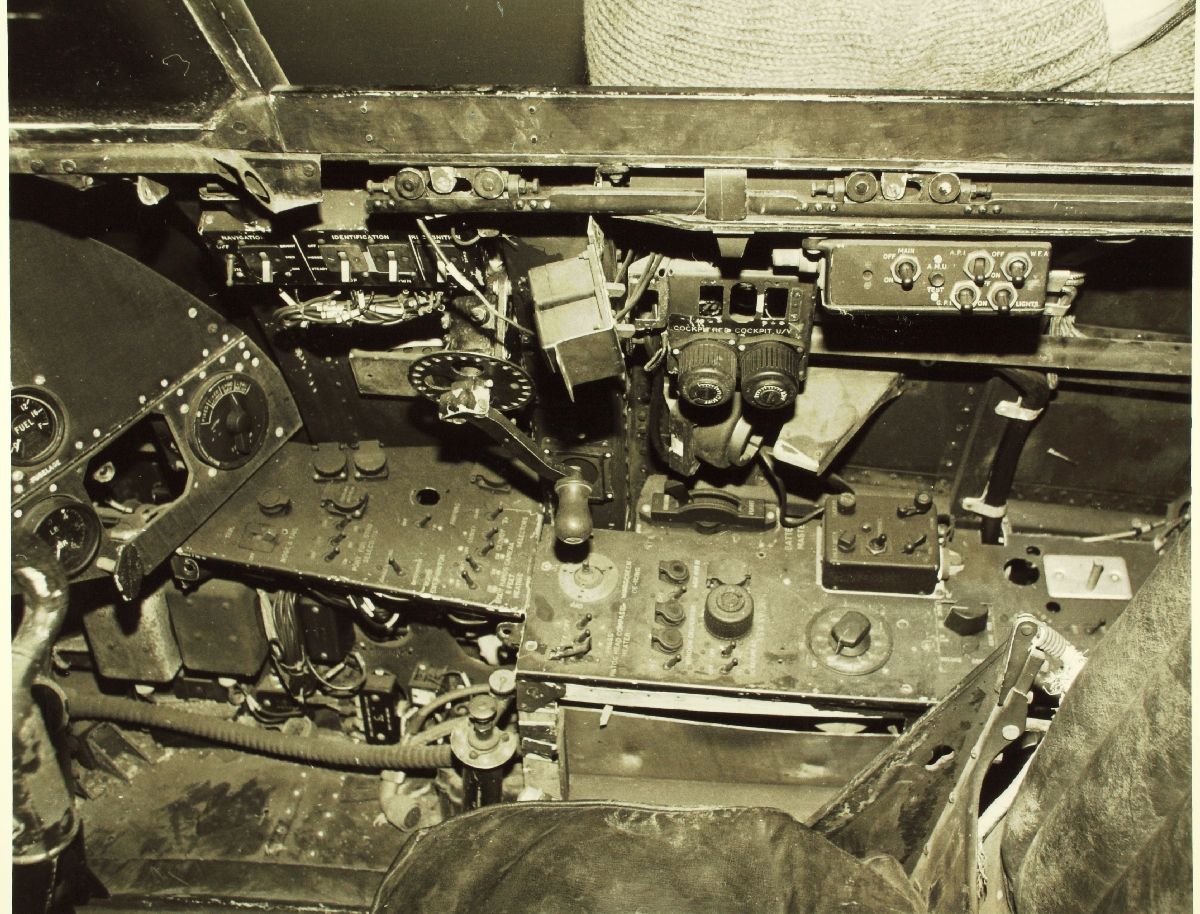
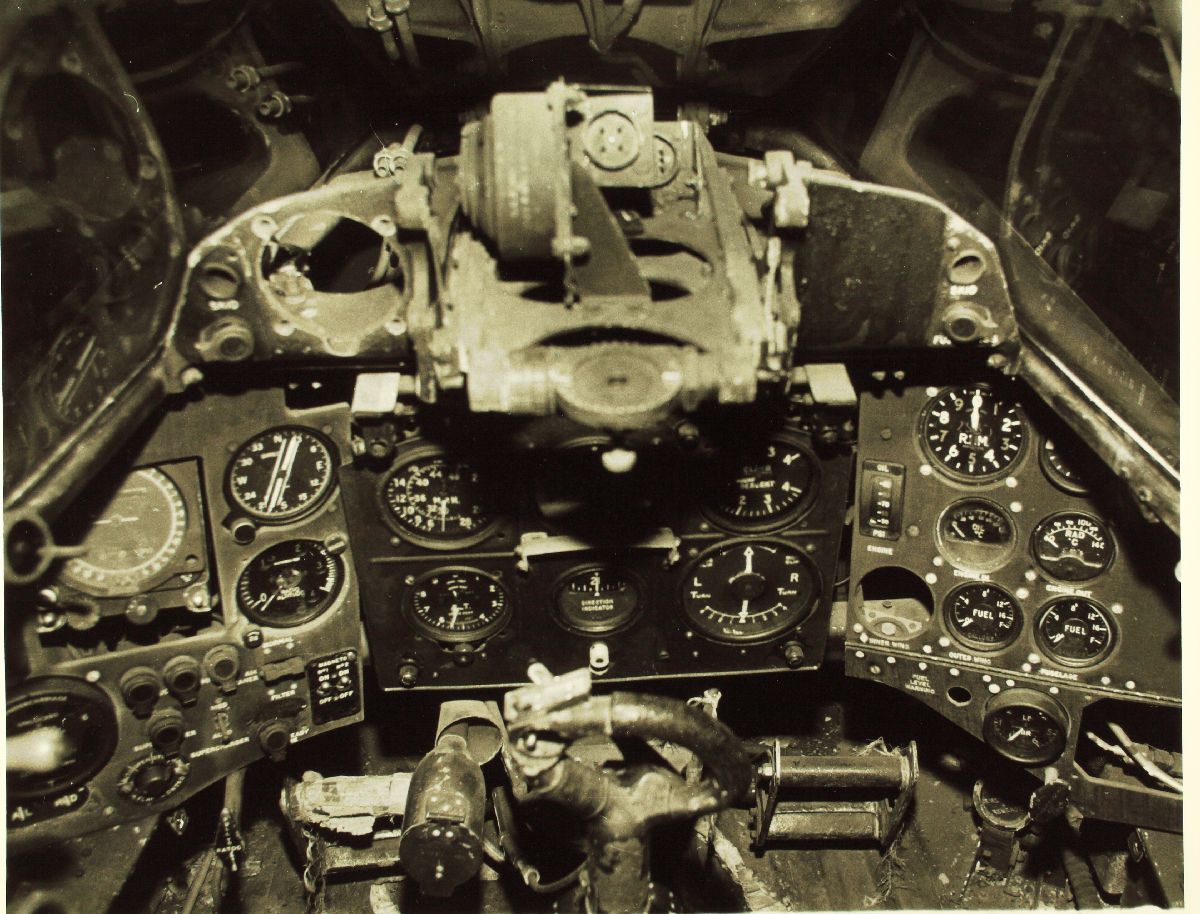
Below S4



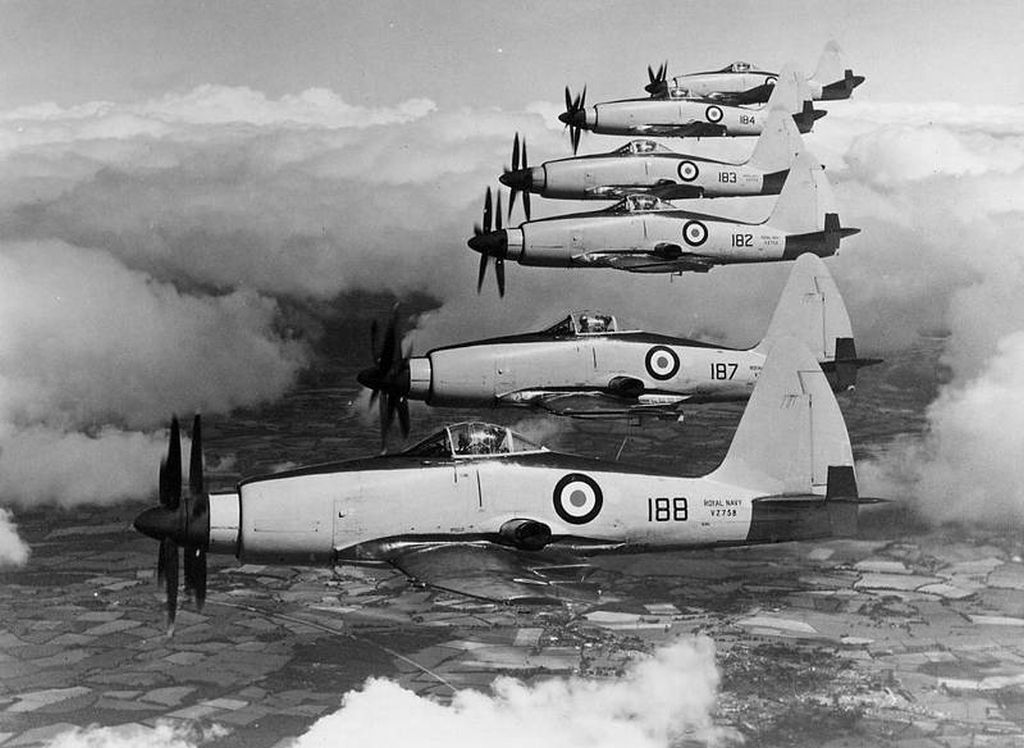
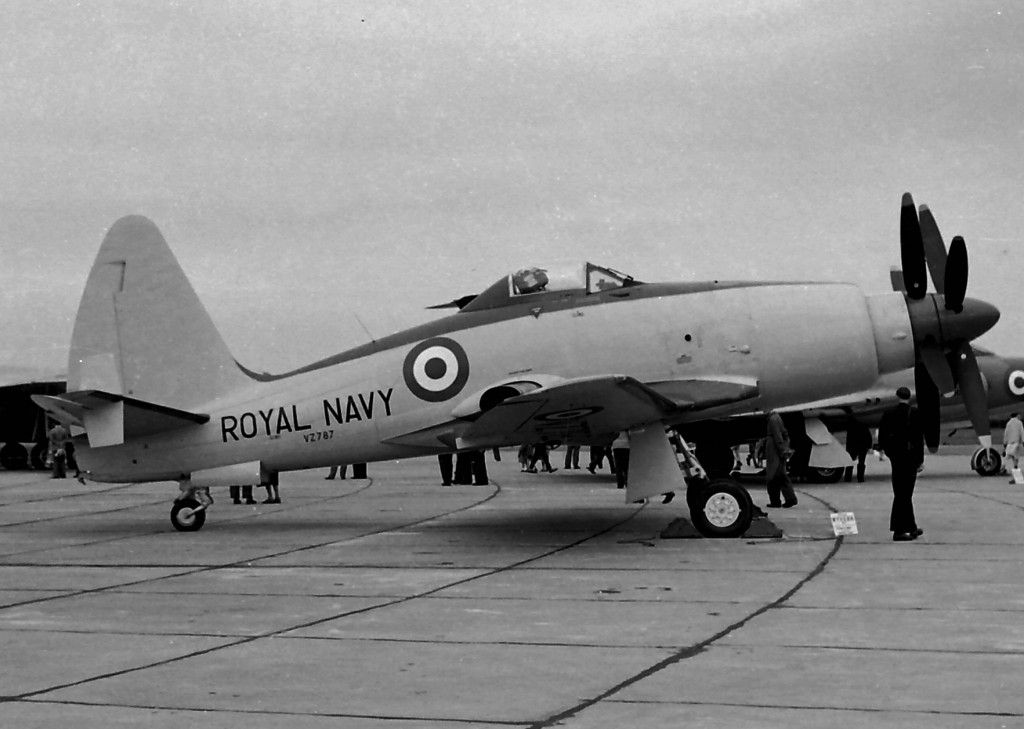

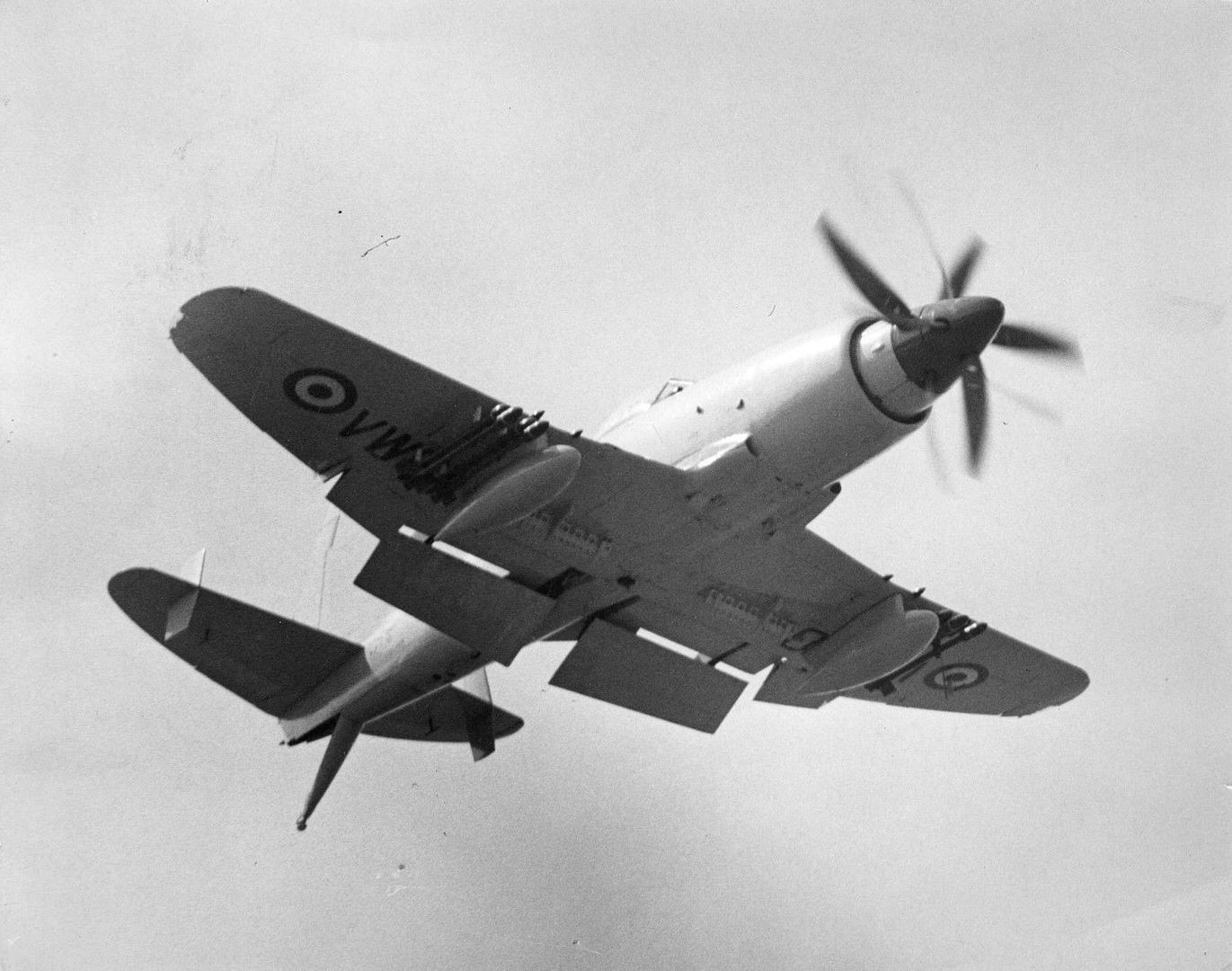
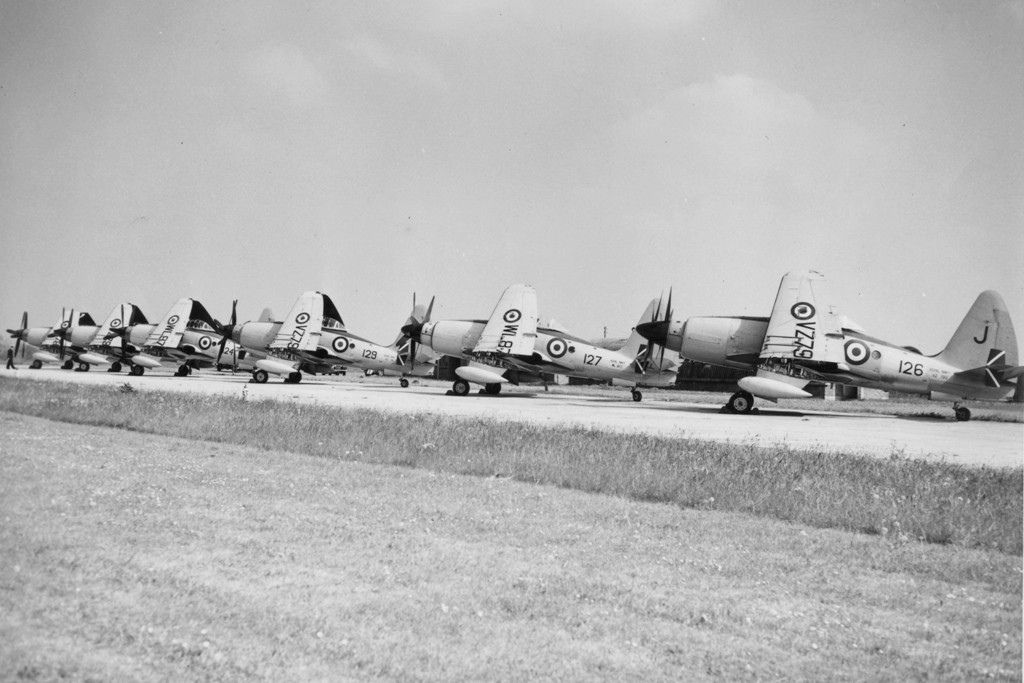
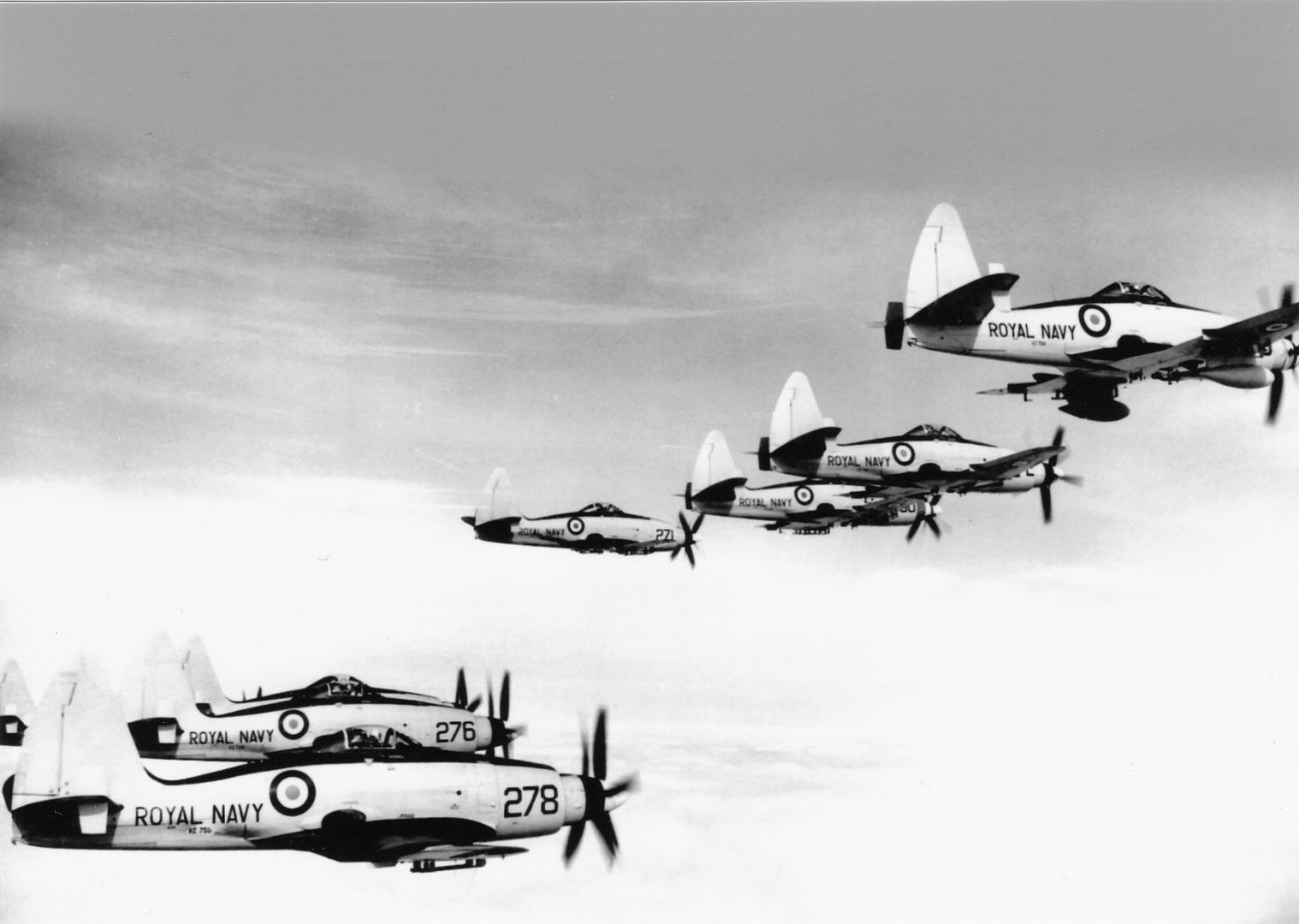
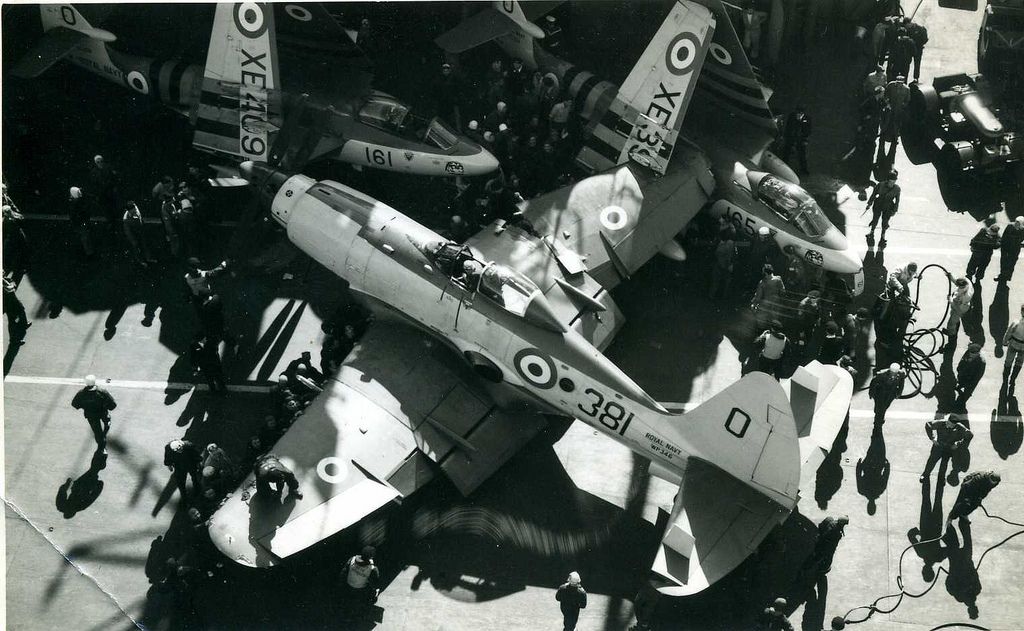
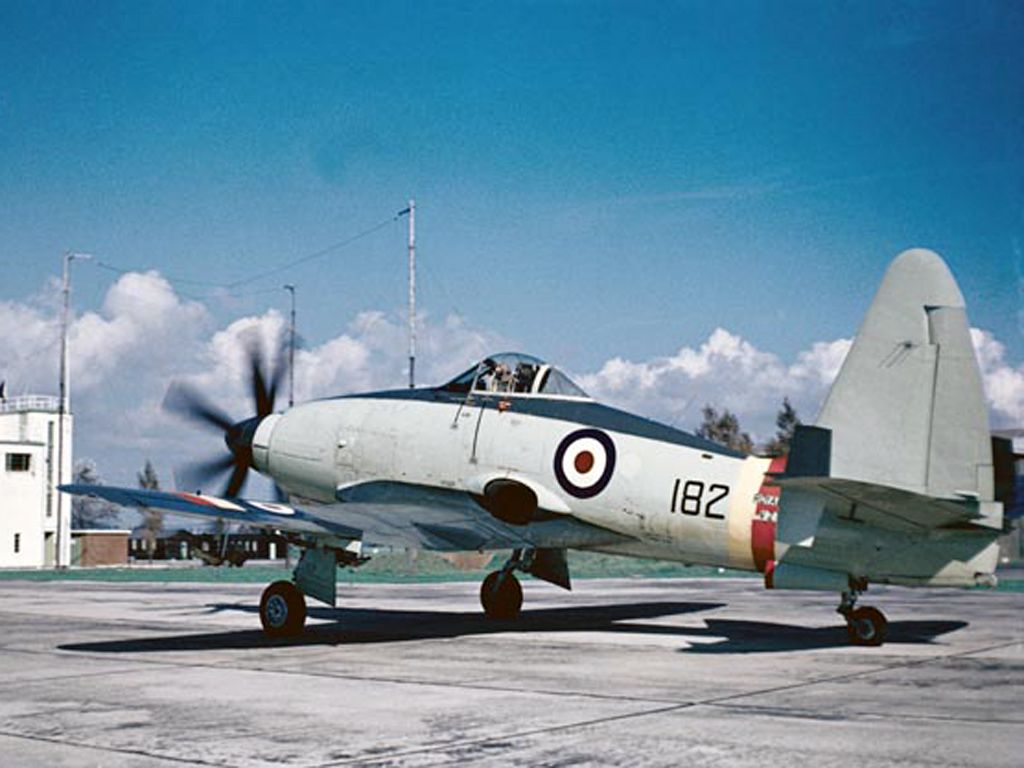

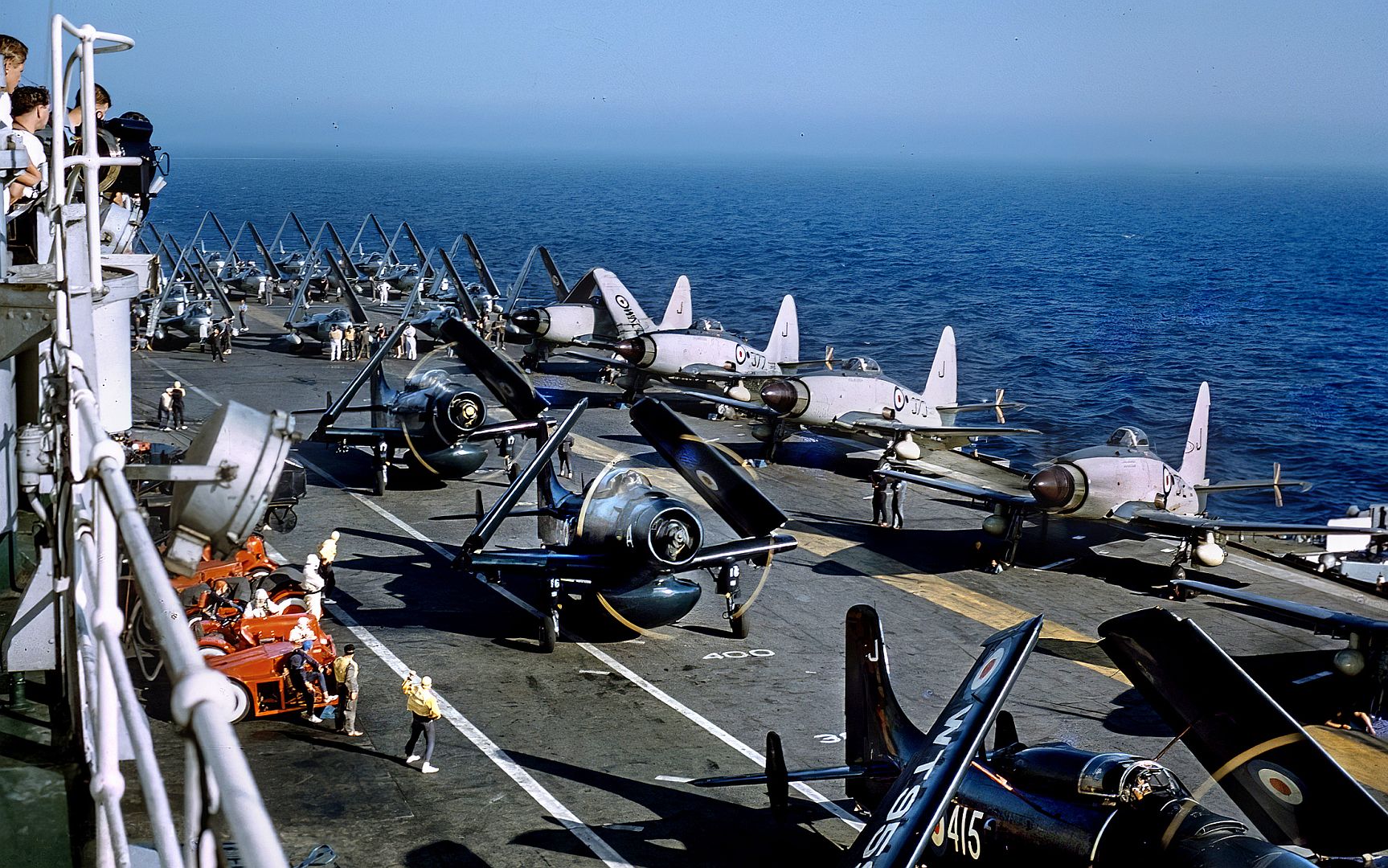
Below cutaway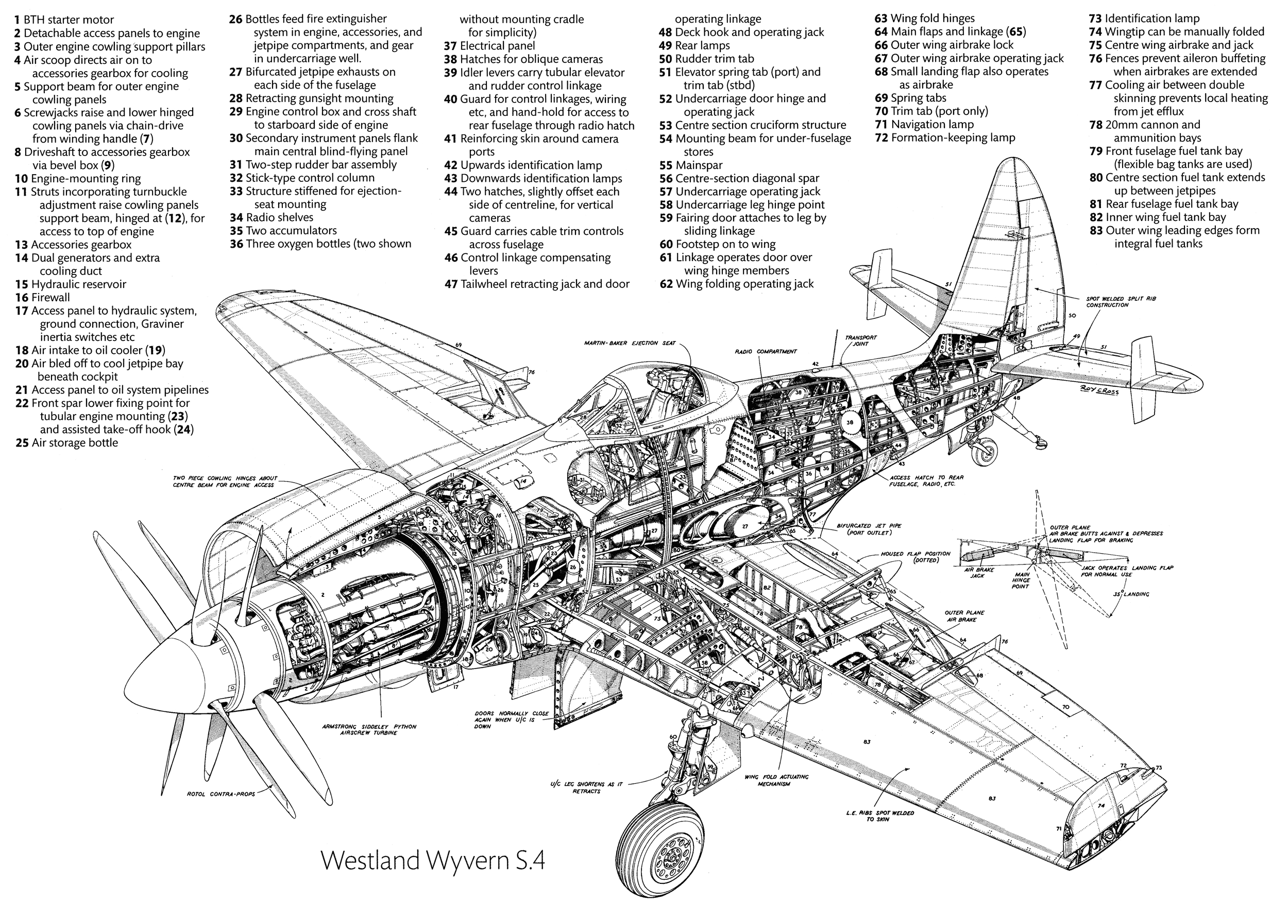
Personally one of my all time FAV aircraft
Post a reply
- Go to Previous topic
- Go to Next topic
- Go to Welcome
- Go to Introduce Yourself
- Go to General Discussion
- Go to Screenshots, Images and Videos
- Go to Off topic
- Go to Works in Progress
- Go to Skinning Tips / Tutorials
- Go to Skin Requests
- Go to IJAAF Library
- Go to Luftwaffe Library
- Go to RAF Library
- Go to USAAF / USN Library
- Go to Misc Library
- Go to The Ops Room
- Go to Made in Germany
- Go to Campaigns and Missions
- Go to Works in Progress
- Go to Juri's Air-Raid Shelter
- Go to Campaigns and Missions
- Go to Works in Progress
- Go to Skinpacks
- Go to External Projects Discussion
- Go to Books & Resources
